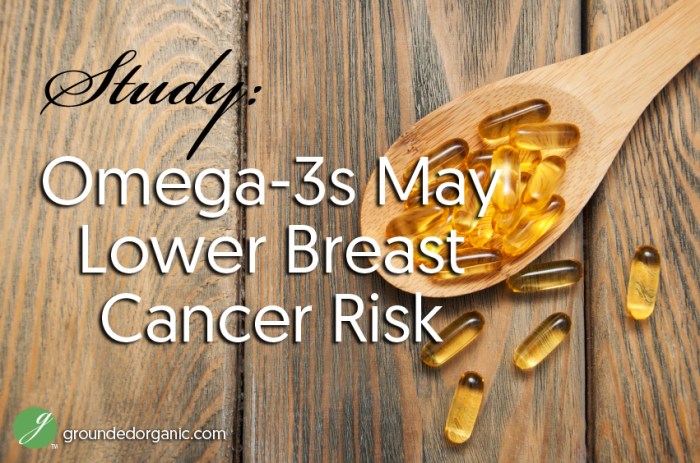How much omega three per day is right for you? This guide dives deep into the recommended daily intake of omega-3s, exploring everything from the different types of omega-3s to the foods that provide them. We’ll also look at supplements, potential benefits, and risks. Understanding your individual needs is key, and this guide provides the information you need to make informed choices.
We’ll cover daily recommendations for various age groups and health conditions, outlining different types of omega-3 fatty acids and their recommended daily allowances. Furthermore, we’ll discuss factors influencing individual needs, such as diet, activity level, and underlying health conditions. This comprehensive overview will equip you with the knowledge to determine the right amount of omega-3s for your specific situation.
Daily Omega-3 Intake Recommendations
Omega-3 fatty acids are essential for various bodily functions, playing a crucial role in brain health, heart function, and reducing inflammation. Understanding the recommended daily intake is key to optimizing your health. This article provides a comprehensive overview of daily omega-3 intake recommendations for different age groups and health conditions, along with insights into various forms of omega-3 supplements and the importance of dietary sources.
Daily Omega-3 Intake Recommendations by Age Group and Health Condition
Individual omega-3 needs vary based on age, lifestyle, and health status. A balanced intake is crucial for maintaining overall well-being.
| Age Group/Condition | Recommended Daily Intake (approximate) | Notes |
|---|---|---|
| Infants (0-12 months) | 0.5-1.0 grams | Breast milk or formula is a primary source for infants. |
| Children (1-12 years) | 0.5-1.3 grams | Growing children need adequate omega-3 for brain development. |
| Adults (19-50 years) | 1.1-1.6 grams | This range covers most healthy adults. |
| Adults (51+ years) | 1.3-1.6 grams | Older adults may have higher needs due to potential health concerns. |
| Pregnant/Breastfeeding Women | 1.4-2.0 grams | Increased intake is essential for fetal development and maternal health. |
| Individuals with Heart Conditions | 1.5-2.0 grams (EPA+DHA) | Higher intake may be recommended to support cardiovascular health. Consult with a doctor. |
Types of Omega-3 Fatty Acids and Recommended Daily Intake
Different types of omega-3s have varying roles and potential benefits. Understanding these distinctions helps in making informed dietary choices.
| Type of Omega-3 | Recommended Daily Allowance (approximate) |
|---|---|
| EPA (Eicosapentaenoic Acid) | 0.5-2 grams |
| DHA (Docosahexaenoic Acid) | 0.25-2 grams |
| ALA (Alpha-Linolenic Acid) | 1.1-1.6 grams |
Factors Influencing Omega-3 Needs
Several factors influence individual omega-3 requirements. Understanding these factors allows for a more personalized approach to meeting needs.
- Diet: A diet rich in plant-based foods containing ALA can contribute to omega-3 intake, but conversion to EPA and DHA is limited.
- Activity Level: Higher activity levels might increase the demand for omega-3s for muscle recovery and inflammation management.
- Underlying Health Conditions: Certain health conditions, such as heart disease or inflammatory disorders, may necessitate a higher omega-3 intake, depending on individual circumstances. Consult a doctor for guidance.
Omega-3 Supplements and Their Potential Impact
Omega-3 supplements are available in various forms, each with its potential benefits and drawbacks.
| Supplement Type | Potential Impact |
|---|---|
| Fish Oil Capsules | Good source of EPA and DHA, but may contain impurities. |
| Algae-Based Supplements | Sustainable source of EPA and DHA, often with fewer impurities. |
| Flaxseed Oil Capsules | Rich in ALA, but the body converts ALA to EPA and DHA inefficiently. |
Importance of Consuming Omega-3s from Food Sources
While supplements can contribute to omega-3 intake, consuming omega-3s from food sources provides other essential nutrients and fiber. Combining both dietary and supplemental approaches is often ideal.
| Food Source | Omega-3 Content |
|---|---|
| Fatty Fish (Salmon, Tuna, Mackerel) | High in EPA and DHA |
| Chia Seeds | Rich in ALA |
| Flaxseeds | Excellent source of ALA |
| Walnuts | Contains ALA |
Sources of Omega-3 Fatty Acids
Omega-3 fatty acids are essential fats our bodies need but cannot produce on their own. Therefore, obtaining them through diet is crucial for overall health. These vital nutrients play a significant role in various bodily functions, from brain development to heart health. Understanding the different food sources and how to incorporate them into your diet is key to maximizing their benefits.
Food Sources Rich in Omega-3s, How much omega three per day
Numerous foods are excellent sources of omega-3 fatty acids, each offering unique nutritional profiles. Choosing a variety of sources ensures a diverse intake of these essential nutrients.
| Food Type | Omega-3 Content (Approximate) | Preparation Methods |
|---|---|---|
| Fatty Fish (Salmon, Tuna, Mackerel, Sardines) | High | Baking, grilling, steaming, poaching. Avoid frying to retain nutrients. |
| Flaxseeds and Chia Seeds | Moderate | Sprinkling on cereals, yogurt, or smoothies. Ground flaxseeds can be added to baked goods. |
| Walnuts | Moderate | Adding to salads, trail mixes, or enjoying as a snack. |
| Edamame | Moderate | Steaming, microwaving, or stir-frying. |
| Soybeans | Moderate | Steaming, roasting, or using in various dishes. |
Nutritional Value and Health Benefits
Incorporating omega-3-rich foods into your diet offers various health benefits. Fatty fish, for example, are rich in protein and other essential nutrients, contributing to muscle growth and repair. They are also known to support heart health, reduce inflammation, and improve brain function.
Incorporating Omega-3s into Meal Plans
Creating meal plans that include omega-3-rich foods can be tailored to diverse dietary needs and preferences. For example, a vegetarian meal plan can include flaxseeds and walnuts as sources of omega-3s. Individuals with specific dietary restrictions or allergies can adapt these recommendations accordingly.
| Meal Type | Example Meal |
|---|---|
| Breakfast | Oatmeal with chia seeds and walnuts, or a smoothie with flaxseeds and berries. |
| Lunch | Salad with grilled salmon and mixed greens, or a lentil soup with walnuts. |
| Dinner | Baked salmon with roasted vegetables, or a stir-fry with edamame and tofu. |
Omega-3 Intake Across Dietary Patterns
Different dietary patterns can influence omega-3 intake. For example, a Mediterranean diet, typically rich in fish and olive oil, tends to have a higher omega-3 intake compared to a diet heavily reliant on processed foods.
Figuring out the right amount of omega-3s per day can be tricky, but it’s important for overall health. While researching this, I stumbled upon some interesting information about how GLP-1 drugs might affect COPD symptoms. GLP-1 drugs copd symptoms seem to be a complex area, but it got me thinking about the potential benefits of omega-3s in different health contexts.
Ultimately, consulting a doctor is key to determining the optimal daily omega-3 intake for your specific needs.
| Dietary Pattern | Approximate Omega-3 Intake |
|---|---|
| Mediterranean Diet | Higher |
| Vegetarian Diet | Moderate |
| Processed Food-Based Diet | Lower |
Effect of Cooking Methods on Omega-3 Content
Cooking methods can impact the omega-3 content of foods. High-heat methods like frying can lead to a reduction in the amount of omega-3s. Steaming or baking are better choices to preserve these valuable nutrients.
Figuring out how much omega-3 per day is right for you can be tricky, especially if you’re dealing with health conditions like migraines. A fascinating area of research is exploring the connection between migraines and multiple sclerosis; migraine and multiple sclerosis connection are sometimes linked, and omega-3s might play a role in managing symptoms. Ultimately, the optimal daily omega-3 intake varies greatly depending on individual needs and health conditions.
Consulting a doctor is crucial to determine the right amount for you.
| Cooking Method | Effect on Omega-3 Content |
|---|---|
| Frying | Reduces omega-3 content |
| Baking | Preserves omega-3 content |
| Steaming | Preserves omega-3 content |
Omega-3 Supplements and Dosage
Choosing to supplement your diet with omega-3s can be a valuable strategy for achieving your health goals. However, navigating the diverse options and understanding the appropriate dosages can be challenging. This section dives into the world of omega-3 supplements, exploring different types, potential risks, and important considerations before starting supplementation.
Types of Omega-3 Supplements
Omega-3 supplements come in various forms, each with its own composition and potential benefits. Understanding these differences can help you select the most suitable option for your needs.
| Supplement Type | Composition | Potential Benefits |
|---|---|---|
| Fish Oil | Primarily EPA and DHA, derived from fish or algae. | May support heart health, brain function, and reduce inflammation. |
| Krill Oil | EPA, DHA, and astaxanthin, derived from krill. | May offer antioxidant benefits and potentially better absorption than fish oil. |
| Algae Oil | EPA and DHA, derived from algae. | A sustainable alternative to fish oil, suitable for vegetarians and vegans. |
Potential Risks and Side Effects
While omega-3 supplements generally pose low risks, potential side effects can occur. Individual reactions and sensitivities can vary.
| Supplement Type | Potential Side Effects |
|---|---|
| Fish Oil | Fishy aftertaste, burping, nausea, and stomach upset. In rare cases, interactions with blood thinners are possible. |
| Krill Oil | Similar side effects to fish oil, but some individuals may experience less burping. |
| Algae Oil | Generally well-tolerated, with fewer reported side effects than fish oil. |
Brand Comparison
Numerous brands offer omega-3 supplements. Choosing a reputable brand with verified purity and appropriate dosage is crucial.
| Brand | Dosage (per capsule) | Price (approximate) |
|---|---|---|
| Brand A | 1000 mg EPA + DHA | $20-$30 for a 30-capsule bottle |
| Brand B | 1500 mg EPA + DHA | $25-$35 for a 30-capsule bottle |
| Brand C | 2000 mg EPA + DHA | $30-$40 for a 30-capsule bottle |
Importance of Consulting a Healthcare Professional
Before starting any omega-3 supplementation, consulting a healthcare professional is essential. Individual needs and health conditions may require specific dosages or adjustments.
Figuring out the right amount of omega-3s daily can be tricky, but it’s a crucial part of a healthy diet. While there’s no one-size-fits-all answer, many sources recommend consulting a doctor to determine the optimal dosage for your individual needs. This can be especially important if you’re struggling with mouth breathing, as it might impact your overall health and well-being.
Learning how to stop mouth breathing can have a surprising effect on your body’s ability to absorb nutrients, and thus, how much omega-3 you might need. Consider checking out this guide on how to stop mouth breathing for more insight. Ultimately, a balanced approach, encompassing a good diet and addressing any underlying issues like mouth breathing, is key to ensuring you’re getting the right amount of omega-3s.
Factors a doctor might consider include current medications (e.g., blood thinners), pre-existing health conditions (e.g., liver disease), and overall dietary habits.
Dosage Guidelines
Proper dosage guidelines vary based on the form and strength of the omega-3 supplement.
| Supplement Type | Dosage Strength | Recommended Dosage |
|---|---|---|
| Fish Oil | 1000 mg EPA + DHA | 1-2 capsules daily |
| Krill Oil | 500 mg EPA + DHA | 1-2 capsules daily |
| Algae Oil | 500 mg EPA + DHA | 1-2 capsules daily |
Omega-3 Intake and Health Implications

Omega-3 fatty acids are essential nutrients crucial for maintaining overall health and well-being. They play a vital role in various bodily functions, including reducing inflammation, supporting brain health, and maintaining cardiovascular function. Understanding the implications of adequate versus insufficient omega-3 intake is paramount for making informed dietary choices.Adequate omega-3 intake is associated with numerous positive health outcomes, ranging from improved cardiovascular health to enhanced cognitive function.
Conversely, insufficient intake can contribute to a variety of health problems. This section explores the profound impact of omega-3 fatty acids on human health, highlighting both the benefits and potential risks.
Potential Health Benefits of Omega-3s
Omega-3 fatty acids, particularly EPA and DHA, contribute to a range of health benefits. Their anti-inflammatory properties are particularly important in reducing the risk of chronic diseases.
- Cardiovascular Health: Omega-3s can help lower triglycerides, reduce blood pressure, and improve blood vessel function. This protective effect contributes to a reduced risk of heart disease and stroke.
- Brain Function: DHA is a major structural component of brain cells, crucial for cognitive function and development. Sufficient omega-3 intake is linked to improved memory, learning, and overall mental well-being. Early childhood exposure to omega-3s is particularly important for brain development.
- Joint Health: Omega-3s possess anti-inflammatory properties that can alleviate joint pain and stiffness associated with conditions like arthritis. Their impact on reducing inflammation in the joints can lead to improved mobility and reduced discomfort.
Potential Negative Impacts of Insufficient Omega-3 Intake
Insufficient omega-3 intake can have detrimental effects on various bodily systems. Chronic deficiencies can increase the risk of various health issues.
- Cardiovascular Issues: Lower levels of omega-3s may lead to elevated triglycerides and blood pressure, increasing the risk of heart disease, heart attack, and stroke. Individuals with a history of cardiovascular conditions may benefit significantly from increased omega-3 intake.
- Cognitive Decline: Inadequate omega-3 intake can negatively impact cognitive function, potentially contributing to memory loss, reduced focus, and other cognitive impairments. This is particularly relevant in aging populations and individuals with pre-existing neurological conditions.
- Inflammation: Insufficient omega-3s can contribute to chronic inflammation throughout the body, which is implicated in the development of numerous diseases, including autoimmune disorders and certain types of cancer. Chronic inflammation is a significant concern for overall health.
Research Findings on Omega-3 Intake and Health Conditions
Numerous research studies have investigated the relationship between omega-3 intake and specific health conditions. These studies have revealed a correlation between increased omega-3 consumption and positive health outcomes.
“Studies have shown a correlation between higher omega-3 intake and lower risks of cardiovascular disease.”
| Health Condition | Research Findings |
|---|---|
| Cardiovascular Disease | Numerous studies have demonstrated a positive association between omega-3 consumption and reduced risk of heart disease, stroke, and improved lipid profiles. |
| Depression | Some research suggests that omega-3 supplementation may be beneficial in managing symptoms of depression, particularly in individuals with a deficiency. |
| Arthritis | Studies have shown that omega-3 fatty acids can reduce inflammation and pain associated with arthritis, potentially improving joint function. |
Mechanisms of Omega-3 Action
Omega-3 fatty acids exert their health benefits through various mechanisms. They modulate inflammatory responses, influence lipid metabolism, and affect cellular signaling pathways. These effects contribute to the overall positive impact on various bodily functions.
- Anti-inflammatory Effects: Omega-3s can reduce the production of inflammatory mediators, such as cytokines. This reduction in inflammation is beneficial in managing various chronic diseases.
- Lipid Modulation: Omega-3s can alter lipid profiles by decreasing triglycerides and increasing HDL (“good”) cholesterol. This beneficial effect is crucial in maintaining cardiovascular health.
- Cellular Signaling: Omega-3s can affect cellular signaling pathways, influencing gene expression and cell function. This influence contributes to a range of positive health outcomes, including reduced inflammation and improved cognitive function.
Practical Considerations for Daily Omega-3 Intake
Embarking on a journey to incorporate omega-3s into your daily diet requires a practical approach that goes beyond simply knowing the recommended intake. This involves understanding how to strategically integrate these beneficial fats into your meals, track your intake, and maintain consistency over time. By adopting these practical considerations, you can ensure that you’re maximizing the health benefits of omega-3s.
Easy Ways to Incorporate Omega-3s into Daily Meals
A variety of delicious and accessible foods offer substantial omega-3 content. To effectively integrate these into your diet, consider incorporating them into your regular meal planning. This proactive approach ensures consistent consumption.
| Food Category | Omega-3 Rich Foods | Preparation Ideas |
|---|---|---|
| Fatty Fish | Salmon, tuna, mackerel, sardines | Baked, grilled, pan-fried, or included in salads |
| Plant-Based Options | Chia seeds, flaxseeds, walnuts, and hemp seeds | Sprinkled on cereals, added to smoothies, or incorporated into yogurt |
| Eggs | Eggs from pasture-raised hens | Scrambled, fried, or used as a component in breakfast dishes |
| Other Sources | Fortified foods like some brands of milk and yogurt | Used in daily smoothies, or cereals |
Role of Portion Sizes and Meal Frequency in Achieving Optimal Omega-3 Intake
Optimal omega-3 intake isn’t solely about consuming these fats; it’s also about the quantity and frequency of consumption. Understanding portion sizes and meal frequency allows for a more targeted approach to achieving the desired health benefits.
A balanced approach to portion sizes and meal frequency is key to consistent omega-3 intake.
For instance, consuming a moderate portion of salmon twice a week, combined with a daily serving of chia seeds, provides a well-rounded approach to omega-3 intake.
Tracking Omega-3 Intake Using Dietary Journals or Apps
Keeping track of your dietary intake is crucial for monitoring your omega-3 consumption and ensuring you’re meeting your individual needs. Utilizing dietary journals or apps can streamline this process, allowing for easy tracking and adjustments.Dietary journals or apps provide a detailed record of the foods you consume and the associated omega-3 content. This detailed record can be used to monitor progress and adjust your intake as needed.
Consistency in tracking is vital for achieving and maintaining your desired omega-3 intake.
Strategies for Maintaining a Consistent Omega-3 Intake Over Time
Consistency is key for reaping the full benefits of omega-3s. Establishing strategies to maintain a consistent omega-3 intake over time ensures that you experience the long-term advantages of these beneficial fats. This involves incorporating omega-3-rich foods into your weekly meal plan and tracking your intake to ensure consistency.Planning ahead and incorporating omega-3-rich foods into your weekly meal plan can help maintain consistency.
Using dietary journals or apps, you can also track your progress and adjust your intake as needed to maintain a consistent omega-3 intake.
Simple Recipes for Incorporating Omega-3 Rich Foods into Different Meals
Incorporating omega-3-rich foods into your meals doesn’t have to be complicated. Here are some simple recipes to help you enjoy these healthy fats in different ways:
- Omega-3 Salmon Salad: Combine grilled or baked salmon with a mixed green salad, chopped vegetables, and a light vinaigrette dressing. This offers a quick and flavorful meal packed with omega-3s.
- Chia Seed Pudding: Combine chia seeds with milk (dairy or plant-based), your favorite sweetener, and a touch of vanilla extract. Allow it to sit overnight in the refrigerator for a creamy and satisfying breakfast.
- Walnut-Crusted Chicken Breast: Coat chicken breast with crushed walnuts, herbs, and spices before baking or grilling. This adds a nutty flavor and a dose of omega-3s to your protein-rich meal.
Closing Summary: How Much Omega Three Per Day

In conclusion, finding the optimal omega-3 intake involves understanding the recommended daily amounts, exploring various food sources and supplements, and considering individual needs. By carefully considering these factors and consulting with a healthcare professional, you can ensure you’re getting the right amount of omega-3s to support your overall well-being. Remember, a balanced approach combining dietary intake with informed supplement choices is often the best strategy for meeting your needs.













